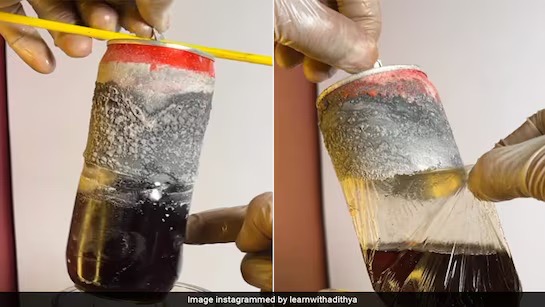Plastic coating inside aluminum cans is used to extend the shelf life of sodas, iced teas and energy drinks that we frequently consume in our daily lives. Aluminum, which stands out with its lightness, durability and easy-to-shape structure, has become one of the indispensable materials of the packaging industry over the years. However, the journey of this metal in the beverage sector, despite its technical advantages, contains hidden health risks.
Aluminum is a type of metal that is abundantly found in nature and used in many areas due to its lightness. Its resistance to corrosion and recyclable structure make it attractive for both manufacturers and environmentalists. Aluminum, which first became widespread in industrial production towards the end of the 19th century, also began to be used in the packaging sector in the mid-20th century.*
The use of aluminum in canned beverages dates back to the 1950s. The US-based Coors company launched the first beverage can made entirely of aluminum in 1959. This development both reduced production costs and created an alternative that provided products with a longer shelf life. Over time, global brands such as Coca-Cola and Pepsi have also put glass bottles in the background and popularized aluminum cans. Today, billions of cans of beverages are offered to consumers each year in this light but durable metal.
Plastic Coating Inside Aluminum
There is a very thin plastic layer on the inner surface of aluminum cans. The main purpose of this layer is to prevent the beverage from coming into direct contact with the metal surface. Many beverages, especially carbonated beverages, have an acidic structure and due to these properties, it is inevitable that they will enter into chemical reactions with metal surfaces. Such reactions can both cause the aluminum to wear out over time and metal ions to pass into the beverage. This situation both spoils the taste and quality of the beverage and poses a great health risk.
To eliminate this risk, manufacturers insulate the inside of the cans with a polymer-based plastic coating. Epoxy resins (especially those containing BPA) are among the most commonly used substances. This coating is invisible to the eye; however, in experiments where aluminum cans are dissolved with strong chemicals, it appears as a transparent plastic membrane.

What Do Plastic Coatings Mean for Health?
Although plastic coatings increase the functionality of the can, they also raise questions about consumer health. Recent studies have shown that these plastics can deteriorate over time and pass micro or nano plastic particles into the beverage. Factors such as temperature changes, high acidity or long shelf life can accelerate this dissolution.
Experts state that some chemicals such as BPA (Bisphenol A) can affect the endocrine system and cause hormonal imbalances, metabolic disorders and some types of cancer. In an assessment published in 2023, the European Food Safety Authority (EFSA) underlined the seriousness of this issue by lowering the daily intake limit for BPA exposure by 20,000 times.* Despite this, coatings containing BPA are still widely used in many beverage cans.
Plastic Coating Inside Aluminum Cans and Hidden Obstacles in the Recycling Process
Aluminum is known to be one of the most efficient materials to recycle. A can can be turned into a reusable form in a few weeks with the appropriate treatment. However, the plastic coating on the inner surface makes this process much more complicated. In recycling facilities, this plastic is separated by burning at high temperatures. This process both increases energy consumption and causes toxic gas emissions into the atmosphere.
According to The Aluminum Association data, although the general recycling rate of aluminum is over 65%, the additional processing cost caused by the inner coatings creates great difficulties in the recycling processes. In addition, in some cases, it is not possible to reuse the recycled aluminum as a beverage can and is directed to less sensitive areas of use.
Is Conscious Consumption Possible?
In line with the information about the plastic coating inside aluminum cans, it is up to us as consumers to make more conscious choices. Glass bottles offer a much safer alternative as they protect the beverage without coming into contact with the plastic or metal surface. In addition, reusable bottles can greatly reduce the environmental burden caused by single-use packaging.
As we have always stated, it is very important for consumers to demand more transparency from brands, to clearly state the contents of the packaging, and to question sustainability claims. Even if a product is marketed as “recyclable”, it is necessary to question how much energy, waste, and chemical process is behind this process and to thoroughly understand all the processes. We, the consumers, should always keep in mind that we shape the decisions of the manufacturers.
Although the invisible plastic coating inside aluminum cans may seem like a small and logical detail from the consumer’s perspective; as we mentioned in our article, it has important effects in terms of health, environment, and industrial production. The risks that the chemicals in their content, especially substances that can affect the endocrine system such as BPA, may pose to human health in the long term are becoming the subject of more and more research today.
Therefore, having more information about not only the appearance of packaging but also its content and function is a critical step in developing conscious, ethical and sustainable consumption habits, as well as protecting our own health as consumers. It is important to remember that informed choices will have long-term effects on both the individual and collective levels.







